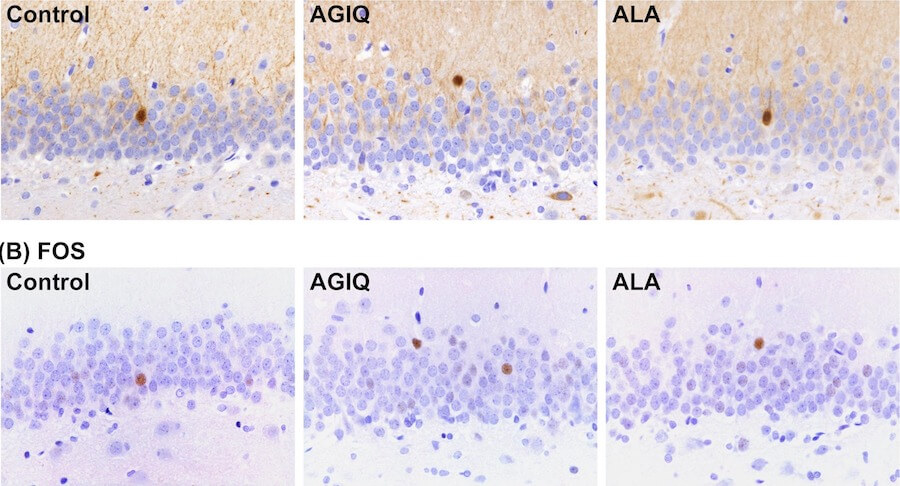This study investigated the effect of exogenously administered polyphenolic antioxidant, α-glycosyl isoquercitrin (AGIQ), on neural function in rats following dietary exposure at 0.5% from gestational day 6 to postnatal day 77, in comparison with nonpolyphenolic α-lipoic acid (ALA) at 0.2%. AGIQ-exposed offspring revealed enhanced fear extinction learning at the 3rd trial and transcript upregulation of Fos and Kif21b in the hippocampal dentate gyrus and Grin2d in the amygdala. AGIQ also increased the number of FOS-immunoreactive (+) hippocampal granule cells. While ALA showed fear extinction learning-related transcript expression changes, it changed neither fear extinction learning nor FOS+ cell numbers. The increases of FOS+ cells and Grin2d transcripts by AGIQ suggested an association with increase of synaptic plasticity, leading to enhancement of fear extinction learning. AGIQ may also upregulate KIF21B, a recently identified memory-rewriting molecule. The present study findings suggest a possible therapeutic use of AGIQ in mitigating some stress disorders.
Continuous exposure to α-glycosyl isoquercitrin from developmental stage facilitates fear extinction learning in rats
View as PDF
Rena Okada, Yasunori Masubuchi, Takaharu Tanaka, Kota Nakajima, Sosuke Masuda, Kazuki Nakamura, Robert R. Maronpot, Toshinori Yoshida, Mihoko Koyanagi, Shim-mo Hayashi, Makoto Shibutani
View as PDF